
Apple disorders visible at harvest
Several apple disorders find their origin in the apple orchard. Some of them are already visible at harvest, but also some of them may worsen during storage. On this page we show some examples and explain how the problems start.
Overview of disorders visible at harvest, which may increase during storage
-

Apple scab
Apple scab is caused by the fungus Venturia. It can resemble a dark skin wart or shows as several small black spots. It is usually already visible at harvest, but can also develop during storage from earlier infections and is then called: storage scab. Scab is most common on organically grown fruit. -
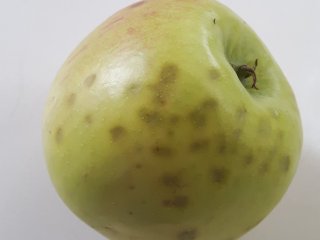
Bitter pit
Bitter pit can already be present at harvest. But it can also develop later in storage. It shows as dotted dark corky spots, which occur on the skin or under the skin in the flesh, or both. The spots do indeed have a bitter taste. The cells in the spots are dead and turn brownish-black. Spots can be more located towards the calyx end of the apple. This disorder is often related to a lack of calcium in the fruit, and solutions may be found in the pre-harvest stage. -
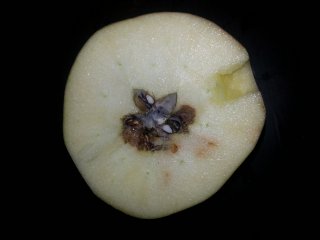
Core fungus
Core fungus (mouldy core) is usually not a big problem. The often greyish fungus in the middle of the core (the part that is not eaten) is visible only after cutting the apple. The apple can be consumed normally. The infection occurred in the orchard during flowering time. -
Lenticel blotchpit
Lenticel blotch pit refers to hard, asymmetric brown patches. The pits begin at the lenticels. This disorder relates closely to 'bitter pit', although bitter pit can also be found deeper in the flesh. Symptoms can increase after harvest similar to bitter pit. Because lenticel blotch pit is related to a lack of calcium in the fruit, solutions can be found in the pre-harvest stage. -

Rainspot disease
Rainspot disease (sooty blotch) can be found mostly on organically grown apples, such as the variety Topaz. It forms irregular, olive-green discolorations on the skin. This disease does not cause rot in the fruits. The apples are safe to eat. The infection occurs in the orchard, among others things by spores that splash onto fruits during rainfall. -
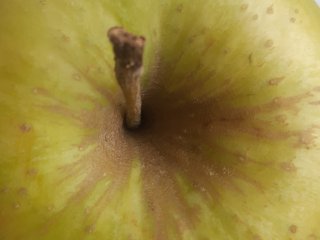
Russeting
Russeting is a coverage of the skin with rough and slightly harder patches of greenish-brown colour (cork). It is usually limited to parts of the apple such as the stem area. But also the entire apple surface can be covered by a network of corky tissue. The russet occurs naturally, especially in certain varieties, and is usually already present at harvest. In rare cases, the russet can develop during storage. It does not harm the fruit but can make the apple look less attractive. -
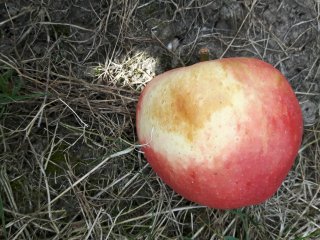
Sunburn
Sunburn on apples is caused by bright sun and high temperatures in the orchard before or shortly after harvest. The affected roundish spot on the apple is usually only slightly discoloured. But in more serious cases, the burnt skin becomes browner or even black, and the fruit flesh can also be damaged. The symptoms can become more severe during storage and is then also called sunscald. Darkened lenticels, sometimes cracked, can also be part of extreme sunburn. -
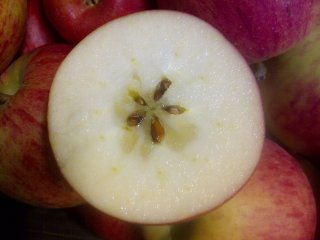
Watercore
Watercore is present already at harvest. The affected tissue is water-soaked and glassy. It is usually not visible from the outside. When you find watercore before the start of storage, you need to adapt your storage conditions. When the area of this water-soaked tissue is limited, apples can still be stored well and the glassy areas will disappear without damage. However, when it is more severe and stored under too low O2 and/or high CO2, the tissue can turn brown.